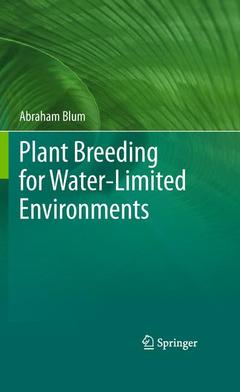Plant Breeding for Water-Limited Environments, 2011
Auteur : Blum Abraham

A science-based breeder’s manual for water limited environments specifically directed at clearing up the confusion and focusing on what can practically be achieved and how to proceed about it - Integrates the major implications of current knowledge in the different relevant disciplines - No competition to date!
Includes supplementary material: sn.pub/extras
Date de parution : 10-2014
Ouvrage de 255 p.
15.5x23.5 cm
Disponible chez l'éditeur (délai d'approvisionnement : 15 jours).
Prix indicatif 52,74 €
Ajouter au panierDate de parution : 11-2010
Ouvrage de 255 p.
15.5x23.5 cm



